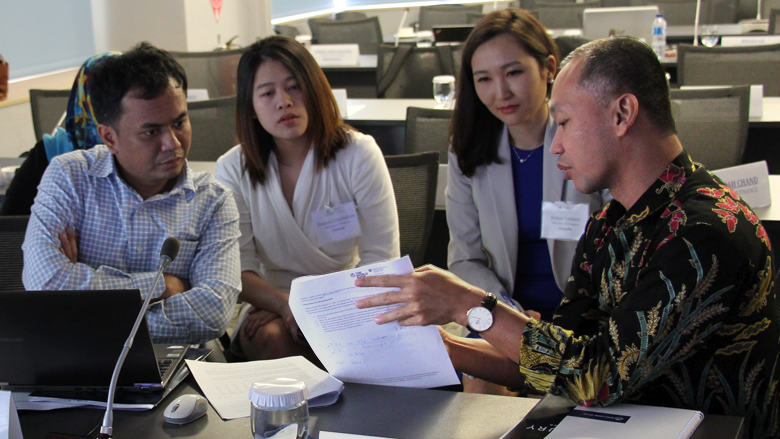Looking out over the busy streets from her hotel room window, Thitiporn (Pom) Yongchaihirun tried to decide when to leave her room to navigate Jakarta’s heavy traffic to make it to the World Bank workshop in time. As a senior-risk manager and working for Thailand Public Debt Management Office (PDMO) for six years, Ms. Yongchaihirun decided to stay on the safe side, as she was also planning to go through her presentation, “Managing Fiscal Risks within an Asset and Liability Framework: Thailand,” one more time.
On her way to the workshop, Ms. Yongchaihirun reflected upon the horror stories from the Tom Yum Goong Crisis, which stemmed from currency mismatches between Thailand’s assets and liabilities, leading to the collapse of the local currency: baht. This historical phenomenon not only ended Thailand’s status as an Asian Tiger economy, but it created a domino effect in the region, leading to the 1997 Asian financial crisis.
Today, Thailand is keeping the foreign exchange exposure below 1% (measured by a share of unhedged external debt to public debt) to avoid making the same mistake. Still, government risk managers like Ms. Yongchaihirun are continuously looking for ways to improve the asset/liability mismatches and pursue a more holistic understanding of the Sovereign Asset and Liability Management (SALM) approach.
“This is precisely the reason why I came to Jakarta,” said Ms. Yongchaihirun. “I’m here because I have worked on the liability management side. The and find out how to address natural hedges.”
In almost every country, the institutions that manage the assets of a sovereign are different than the bodies that oversee the liabilities, often with mandates to optimize their specific deliverables. But the sound macroeconomic management requires many entities with different mandates to coordinate seamlessly, which will deliver economic growth and provide resilience against economic shocks.

